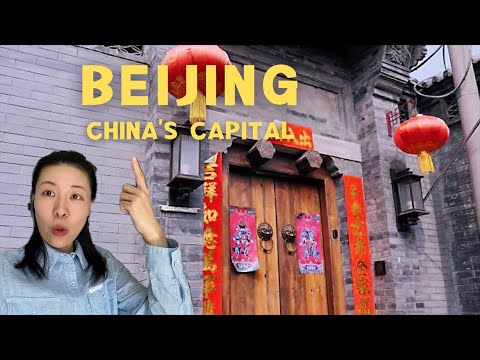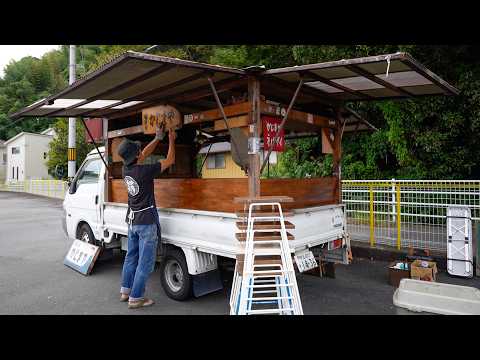Does Beijing deserve to be China's Capital? | China Impression Tour EP1

Hi, welcome to my channel It's Lin here I'm making a video series about China Impression Tour in some of China's main cities and our tour for today is Beijing Beijing has a history of more than three thousand years and has been the capital of six dynasties in Chinese history Yan Liao, Jin Yuan, Ming and Qing the central axis of Beijing was the first creation of the Yuan dynasty and in the following Ming and Qing dynasties this central axis was used as the symmetrical axis for the east-west layout of the city's buildings today most of Beijing's famous attractions are located along the central axis most of which were built during the Ming and Qing dynasties and have a history of more than six hundred years Beijing officially became the capital of the people's Republic of China in September 1949 and had since gradually developed into the mega city it is today as a tourist the traffic jam during the morning and evening rush hours could be ignored lower ticket prices and lots of free places to visit are more attractive Let's take a tour of Beijing along the central axis Tiananmen a city tower more than 30 metres high on the central axis is the heart of the capital and the symbol of China it was from here that Chairman Mao Zedong proclaimed the funding of China together was the neighboring Great Hall of the People the Monument to the People's Heroes Chairman Mao's Memory Hall and the National Museum Tiananmen square is now the largest city square in the world and can accommodate up to 1 million people for gatherings it seems to have become a sentiment in the heart of the Chinese people to go to the capital and watch the national flag rising ceremony in Tiananmen square it is this sentiment however that has forced visitors to queue all night during the holidays to wait for the flag rising ceremony that comes with the rising sun the Imperial City the forbidden city is the center of the central axis and the heart of old Beijing originally the Imperial palace of the Ming and Qing dynasties where twenty four emperors once lived the overall architectural layout of the forbidden city is the perfect embodiment of the art of symmetry visitors entered the forbidden city through the main gate Wumen only the emperor could enter and leave through this gate while ministers had to pass through the side gates walking along the central axis through the Taihe gate the largest gate in the forbidden city we will come to the outer court where the emperor used to conduct state affair there are three main halls in this area Taihe dian, Zhonghe dian and Baohe dian among them Taihe dian is the most magnificent and grand ceremonies such as enthronement, appointment of generals and expeditions are held here the second half of the forbidden city is the inner court area through the Qianqing gate we enter the harem the three palaces here are arranged in order where the emperor and empress lived and conducted daily affairs from here six western and six eastern palaces were built symmetrically these palaces are the same shape arranged in order and are the residents of concubines as well as their kids at the end of the central axis of the forbidden city is the imperial garden the forbidden city was built in 1406 during the Ming dynasty and took 14 years to complete with precious wood and stone being transported to Beijing from all over China the walls are nearly 10 meters high with a ring of moats around them the entire forbidden city is the size of 90 football pitches with more than 70 palaces and more than 9000 houses a full day may not be too much time if you want to explore it in detail the architecture is magnificent and the detail is exquisite as well following the central axis to the south we came to the temple of heaven the place where emperors prayed for harvest and prayed to heaven the architecture of the park is very meaningful and the shape of the round sky and square ground contains the ancient Chinese symbolism of heaven and earth the hall of prayer for good harvest is a landmark building located in the prayer valley area the exterior of the hall is round symbolizing heaven the tiles are blue symbolizing the blue sky and the pillars and partitions symbolize the four seasons of the year the twenty four solar terms the twelve months and the twelve hours of the day as well as the constellation another landmark is the Circular Mound Altar commonly known as the Altar of Heaven where the great praying ceremony is held every year on the winter solstice the number of stone steps and tablets on each level of the altar are all multiplies of nine to symbolize heaven the repeated use of nine emphasizes the status of heaven Tiananmen was the main gate of the Imperial city during the Ming and Qing dynasties and the street facing it on the central axis was called Qianmen street which means the front door street since the middle of the Ming dynasty Qianmen street has gradually developed into a busy commercial street nowadays it is home to many old Beijing restaurants teahouses, pharmacies clothing and other traditional shops the traditional Chinese humor show which originated in Beijing also has a performance theater here (De Yun She) as we leave the imperial city and head north the first place we will come to is the drum and bell tower in ancient times the bells and drums ran out the time for the residents from here we then visit Hutong the residential streets and alleyways of ancient Beijing located on each side of the central axis NanLuoGuXiang was built in the Yuan dynasty and has a history of more than 700 years it is a large Hutong with a width of eight meters and a total length of 787 meters on its left and right sides there are eight hutongs in the east and west directions which are neatly arranged and have a very regular layout just like a fishbone this is one of the oldest streets in Beijing that still retains the texture of Hutong countryard layout and is also home to the former residences of some prominent figures in modern Chinese history not far away is Yandai Xiejie - Yandai Byway also one of the oldest hutongs there is also Shichahai a lake that has been a place of recreation since the Qing dynasty nowadays this large area has become a special tourist district modern shops seem to give the area an extra commercial touch so let's go to Xisi street to see the ordinary local life located in the city center Xisi was also an important commercial area in the Qing dynasty but now there are no skyscrapers here you can see trolley buses, go to the old book store go to the old restaurant frequented by locals and find authentic snacks the houton here is still inhabited continuing north along the central axis brings us to the venue of the 2008 Beijing Olympics here you will find the Bird's Nest the Water Cube and the Olympic Park and on its north-western side next to the beautiful Summer Palace sits a quiet historical sadness - the Yuanmingyuan Park Yuanmingyuan an exquisite royal garden of the Qing dynasty it's so large that it is beyond my imagination covering the equivalent of 500 football pitches the usual tour route is only a corner of it while most of the rest area is full of ruins the Yuanmingyuan is also known as the garden of the gardens as it was a collection of the best Chinese and foreign horticultural art of the time unfortunately this exquisite garden was destroyed in 1860 and 1900 today visitors can only imagine its former glory Putting aside history, universal Beijing resort opening in 2021 has become a new favorite besides Harry Potter and Jurassic Beijing owns the world's first transformers park as a mega city superbuildings of Beijing are located in the central business district our trip is almost over Beijing the capital city of China is a mix of ancient and modern there is still plenty to discover
2023-10-03 16:50


